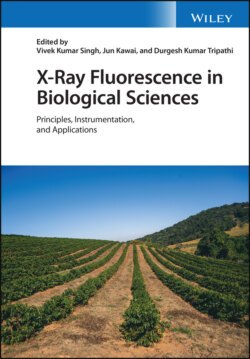Читать книгу X-Ray Fluorescence in Biological Sciences - Группа авторов - Страница 83
6.3 Determination of Lead Concentrations in Human Whole Blood Using EDXRF Technique with Special Emphasis on Evaluating Association of Blood Lead Levels with Autism Spectrum Disorders (ASD) 6.3.1 Background
ОглавлениеAutism spectrum disorders is an emerging and increasingly relevant point of social concern. ASD is a range of potentially devastating childhood conditions associated with environmental, genetic, and epigenetic factors. Some of these effects appear to be transgenerational. ASD is a kind of neurodevelopment disorder that can produce features such as impaired psychosocial and adaptive skills functioning, as well as lack of social interaction, poor communication skills, and compulsive patterns of activity [9] are also reported regarding ASD. It is thought that autism is initiated by disruption of normal neurobiological mechanisms during the prenatal period, accompanied by strong genetic components, but nongenetic factors are likely involved as well with increased prevalence.
A combination of genetic susceptibility and exposure to environmental toxins at critical periods during brain development has recently been hypothesized as the origin of autism [10] and several studies have observed elevated levels of heavy metals and essential minerals among children diagnosed with ASD [9]. Johnson and Myers [11] suggested that environmental exposure to heavy metals and essential minerals may act as a central nervous system teratogen in early gestational life. Among the toxic heavy metals, Pb is of particular concern as an undesirable contaminant originating from a variety of common sources such as motor vehicles, lead paint, contaminated soil etc. Pb can be ingested through air, drinking water, food etc. Developing fetuses and children are more sensitive to Pb exposure compared to adults because of the relative immaturity of the blood–brain barrier, increased gastrointestinal absorption, and the prevalence of hand‐to‐mouth behaviors. Hence the possibility of Pb exposure leading to the development of ASD in children is of greater concern to children than adults.
Many studies from across the world support the association between exposure to Pb and ASD. But different, conflicting [12] opinions are also available and must be taken into consideration. Adams et al. [13] conducted a study where they compared 55 children with autism ages 5–16 years to 44 control subjects of similar age and gender and reported that the autism group had significantly higher levels of Pb in their red blood cells and higher urinary levels of lead, thallium, tin, and tungsten. These are toxic metals that can impair brain development and function, and also interfere with the normal functioning of other bodily organs and systems. Exposure to Pb can pose a substantial risk to nervous, immune, renal, skeletal, and hematopoietic systems of both adult and children. Neurological, physiological, and behavioral disorders in children due to Pb exposure, are very common. According to the US Centers for disease control and prevention (CDC), 10 μg/dl or higher concentration of Pb in blood is considered as “elevated” or a “level of concern.” However, it has been shown that even blood Pb concentrations below 10 μg/dl are inversely associated with children's intelligence quotient (IQ) scores at three to five years of age. As a result of these findings, the CDC has recommended changes for the threshold of acceptable elevated blood Pb concentrations to 5 μg/dl.
